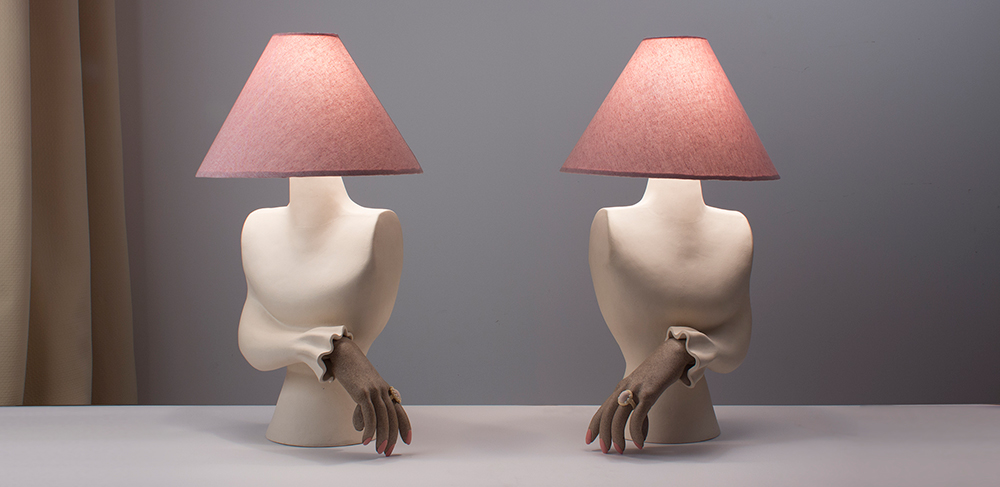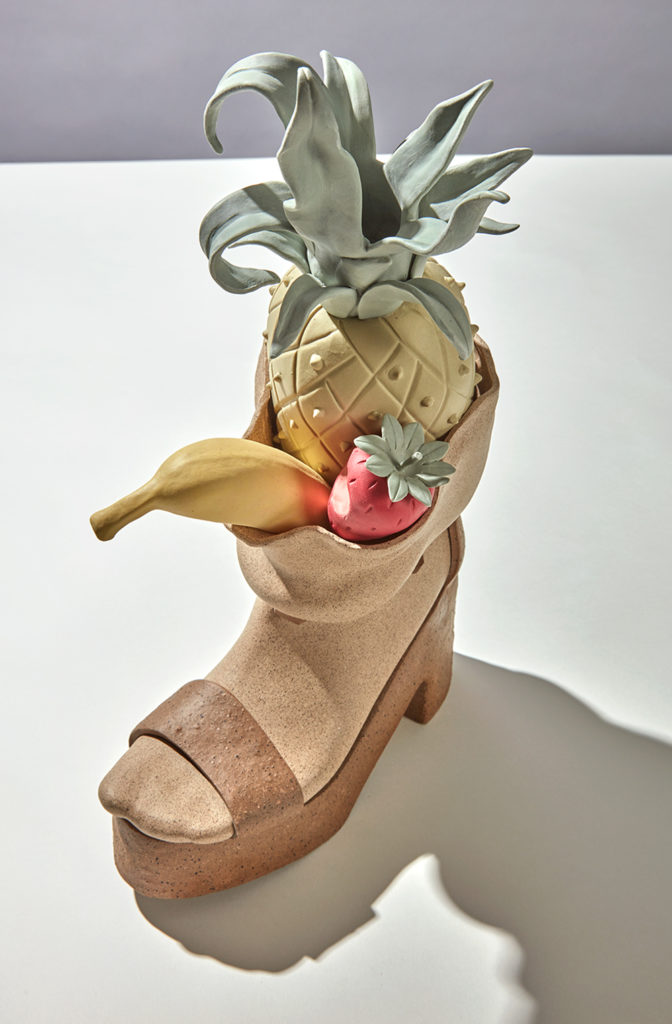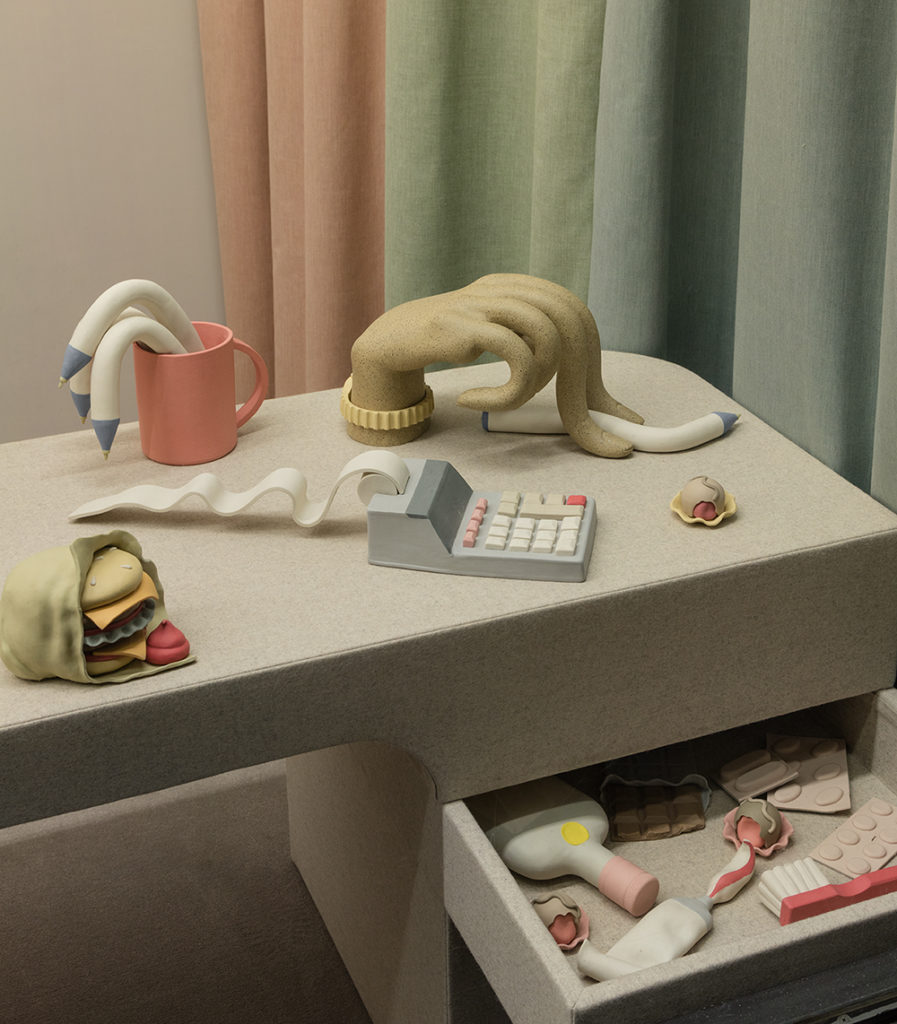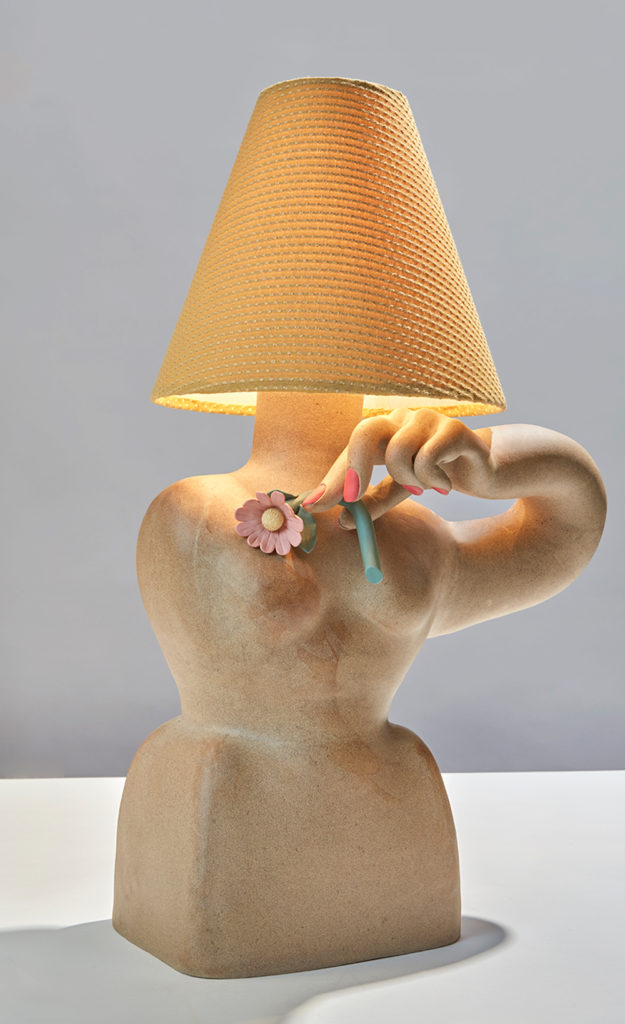
Genesis Belanger is fascinated with liminal spaces – the hallways, the empty parking lots, the metaphysical waiting rooms of life. They’re real places, sure, but they also represent impermanence, anticipation, and the feeling that you’re on the verge, but not quite there. Another way to put it? The oft-shaky present. “We’re living in this patriarchy and there’s this promise of equality, and we’re working towards it, but it hasn’t happened, so we’re sort of on the threshold,” she says. “I felt like a waiting room was a perfect physical manifestation of feeling like you’re being held in time.”
It might sound like the Brooklyn-based sculptor is describing purgatory, but a quick glance at her so-called waiting rooms would reveal just the opposite: a universe so full of kooky pastel objects, you’ll want to stay forever.

Belanger’s surreal sculptures include a lighter with a tongue in place of a flame, a sandal stuffed with tropical fruits, and an ice cream sundae topped with coins and diamond rings. And they’re all figments of a wild imagination that has been fuelled by episodes of The Simpsons, Claymation, and the design floor at the Metropolitan Museum of Art. “It’s an odd mix of high and low,” she says. “I’m so moved by classic design elements, but at the same time, I can’t avoid The Simpsons—they were so huge when I was little, and those characters are archetypes that I feel have not gone away. I feel super influenced by them.”
They’re also a metamorphosis of the artist’s previous career in advertising, where she’d often create props for elaborately staged photoshoots. “A lot of the images we look at are sold to us as reality, but really they’re super constructed in the service of capitalism, or to use our psychology against us,” she says. “I use some of these same tools, but instead of trying to sell things, I try to start conversations or bring a different sense of self-awareness to the viewer.”

Incredibly, Belanger’s sculptures are all hand-molded, a fact belied by their elegant, machine-made appearance. “It’s funny to see people trying to figure out how I make things,” she says. “I use the most rudimentary pottery tools, like plastic ribs, to achieve the smooth edges.”
In Holding Pattern, her installation for The New Museum’s storefront window, Belanger constructed a receptionist’s desk strewn with wilted pens (“They have been waiting so long that they’re starting to droop”), a displaced arm pinching a hot dog, and a tape dispenser holding pink bubble gum tape, a staple candy of the era she grew up in. “I’ve been asked whether my work reflects my own narrative, and I think we can’t subtract ourselves from our work,” she says. For her solo show, “Coin for the Ferryman,” currently on display at Los Angeles’s Ghebaly Gallery, she expanded that world even further. Beyond the desk, you’ll find a stack of mattresses topped by a big gaudy toothbrush with fingers for bristles and liquor bottles stuffed with flowers.

Belanger’s formative years, late ’80s and early ’90s, are impossible to miss in her sculptures. “I like the things I make to have a tint of nostalgia,” she says. “It has become a dirty word in the art world, but I read that nostalgia is what allows people to remember that there was once something better than there is now and feel motivated to move forward—so to me, it has this really positive connotation.”

